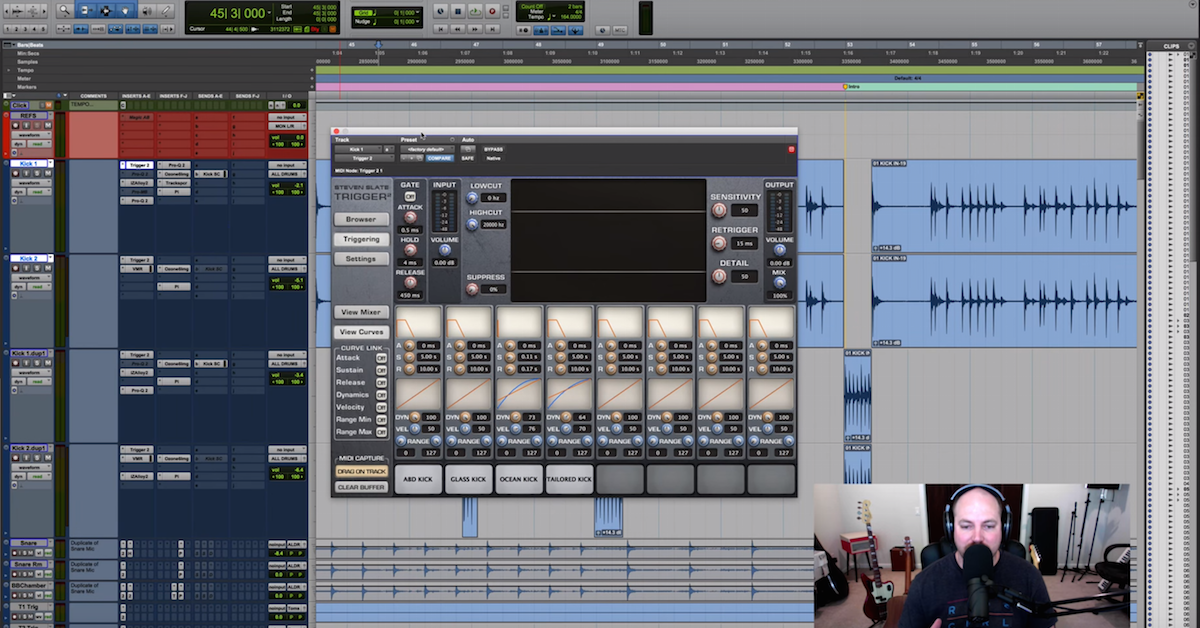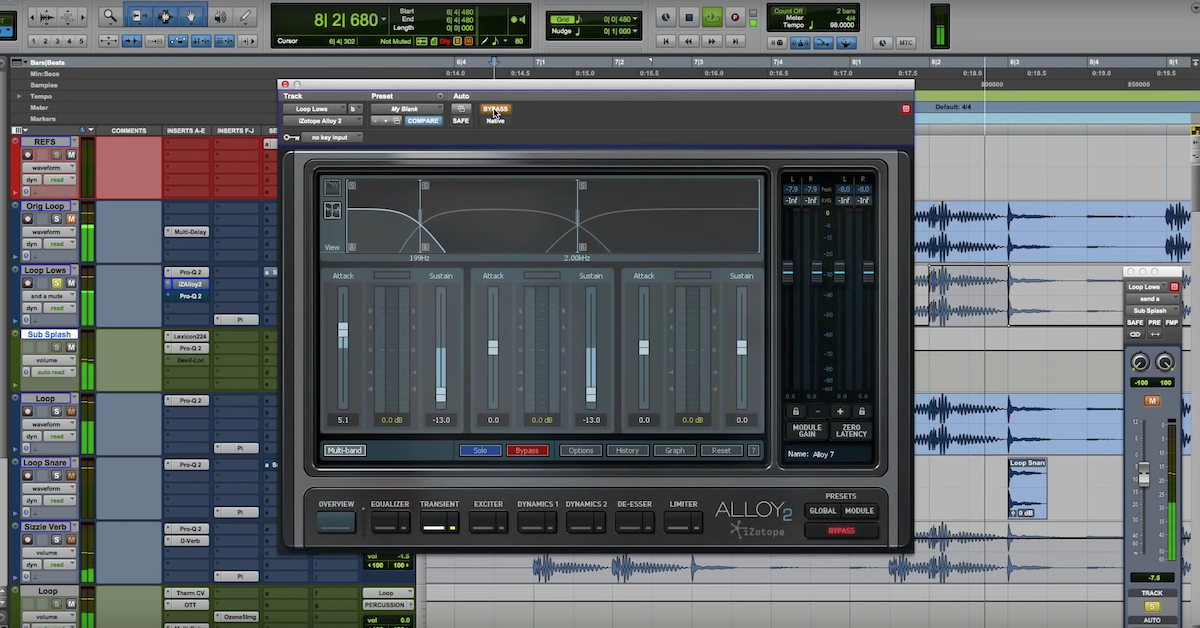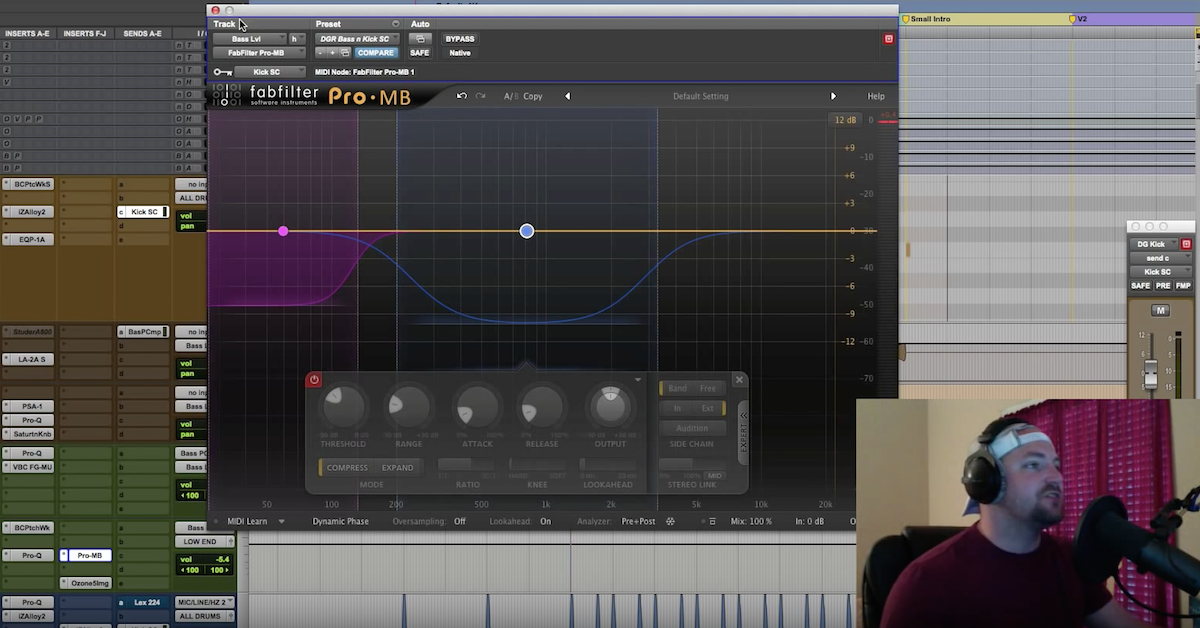Tips for Managing Low End in a Modern Rock Mix
It’s not side-chain compression, it’s side-chain multi-band volume ducking. It’s absolutely incredible. You’ll see that in a second.
But first, I want to introduce you to my new chorus, it’s called mixing modern rock. I’m going to show you a before and after sample right now, and then we’ll talk about low end.
[song]
Okay, so I hope you dig that. If you want to see how I take those dry tracks and transform them to a finished master, I show the entire process. Mixingmodernrock.com, or the link is the description below. The multi-tracks are included, so you can mix that song and use it for your resume as well. I hope you check that out.
Today, we’re talking about low end. Now, in this particular song – this is a song from Mixing Modern Rock – I’ve got a kick. I love a lot of sub in my kick, so there’s a couple of ways that I do that. We’ll talk about that. I’ve got the bass, and I love a dirty, distorted, driving bass, but I also love a lot of low end, so I’ve got Low Ender generating some subs for the bass.
We’ve got a sub-bass drop, like an 808 type thing. We’ve got a tuned bass drop that I’ve got also going to what I use – it’s called the Gino-Hall. It’s my sub-splash. What I do is I use an EQ – excuse the surgical spaghetti mess here, but what I do is I take all of the top end essentially out of a reverb, and I’ll send elements to it, and then I’ll widen it so that the reverb is only sub, and it kind of extends the sound of the bass, the toms – could be used on any number of things. I use it a lot on 808 drops, toms for certain ring out sections, and anywhere where I want to give a little bit more power to kind of fill some space, so…
Sub-splash is going into the Lexicon 224. Maybe about 4 or 5. Let me actually show you the sub-drop and the sub-splash, since I’m talking about it. And then you can see the widening that I’m doing. A good 40% or so. Here is the sub-splash.
[sub bass splash]
And then here’s – as Pro Tools glitches and my voice cracks at the same time – now here’s without the sub-splash. You know what, let me name that sub-splash. Okay.
[sub bass]
Okay, and then back with the splash.
[sub]
Alright. Sweet. So, sub-splash. A little rabbit trail. I wanted to show that off, but back to the task at hand, we’re talking about managing the low end from these multiple elements. So we’ve got, one more time, the kick with the sub, the toms that have a decent amount of 70-100, then we have the 808, the sub-splash, and the bass guitar. There’s probably something else, but for now, those are the ones we’re going to focus on.
So what I’ve done is I’ve used Waves Factory Track Spacer, and I’ve put that on the bass, I’ve put it on the toms, and I’ve put it on my main kick track here, and what I’m doing is I’m sending the 808 and the sub-splash into it through a side-chain called “Sub SC” for Side-Chain. Sub SC.
And we can see that. Let’s pull it open on the bass. The first instance is actually coming from the kick. I’m sending the kick into the bass, and I’m pushing down 76Hz and below. Every time the kick hits, it’s going to push the frequency range from 20Hz to 76Hz down on the bass so that the kick wins the low end battle.
What I want to show you is duplicating Waves Factory Track Spacer and using the sub from the bass drop and the sub-splash, I’m sending into here, and I’m removing similar – the 76Hz and below in the bass guitar, pretty aggressively, and then I’ve slowed the release down a little bit on the bass so that the sub rings out, and the subs are going to kind of switch rolls a little bit.
So initially what’s going to happen is when the bass drop hits, the bass guitar sub frequencies – 76Hz and below – are going to drop, and then as the sub fades out, the bass is going to come back – the sub in the bass is going to come back.
I’ve also got the kick up here, so you can see that same frequency range – 76Hz or so – at about a 70% ratio, and that – you know what, that could be the default setting, because kicks are quick, right?
So what does it sound like? Here is the track without – if it’s in Solo, it’s not too bad, because the multiple elements with low end are going to the 2buss, and it’s just those elements, so it doesn’t really overload, but once you have the guitars, and the percussion, and all of the other stuff, the vocals, the backgrounds, the stacks, you’re driving so much signal that it overloads.
So here’s in the mix with the Waves Factory Track Spacer.
[song]
Okay, so to my ear – we’ll let the Woo ring out there, my mono spring reverb.
So to my ear, that’s nice and clean. Everything just kind of extends, the part comes in, we get the impact, but we’re not getting any overloading or distortion on the 2buss.
Now watch what happens whenever I bypass Waves Factory Track Spacer on these elements.
[mix]
Okay, so if you can’t hear that, it might be because you’re not listening with a sub or a good pair of headphones, a well treated room, etcetera. Make sure that you’ve got a way to hear sub frequency down below 70Hz, 50Hz, 20-30Hz. Feel that stuff.
Let me do this. Let me loop that section there, and with the send muted, obviously there’s no signal going into the plug-in, so nothing is happening.
So what I’m going to do is I’m going to loop it and then I’m going to unmute the send so that we hear the difference. So this will be first, I’ll hit it a couple of times with no Waves Factory Track Spacer, and then I’ll bring it back in.
[mix]
Beautiful. Gotta love Pro Tools crashing.
You be the judge, but for me, if you’re hearing those sub frequencies, you should hear that get a lot cleaner, a lot tighter, it’s much more smooth, and it will prevent the 2buss from overloading and getting too excited with those sub frequencies, and then I do multi-band compression as kind of a mastering phase on my 2buss in the backend, and so that low end compressor is going to be much happier now if I manage my low end in the mix, as opposed to trying to rely too much on that.
So I hope you dig that. Waves Factory Track Spacer. I’ve shown it a few times. It’s a great plug-in. I dig it. I hope you dig it as well.
So Mixing Modern Rock, check out that in the description below, and we’ll catch you in many more tutorials to come from theproaudiofiles.com and davidglennrecording.com.






